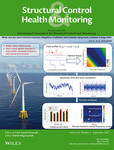Performance and optimal design of base-isolated structures with clutching inerter damper
Summary
The performance and optimal design of the base-isolated structure supplemented with clutching inerter damper (CID) subjected to seismic loading are investigated. Because of the nonlinear force-deformation behavior of the CID, the stochastic response of the isolated structure subjected to nonstationary earthquake excitation is obtained using the time-dependent equivalent linearization technique. To investigate the effects of nonstationary earthquake characteristics, the isolated structure's nonstationary response is compared to the corresponding stationary response. For a given isolated structural system and excitation, there exists an optimum value of the CID inertance at which the root mean square absolute acceleration of the superstructure achieves a minimum value. The effects of key parameters like superstructure flexibility, isolation period, and isolation damping ratio on the CID's optimal inertance are examined. The seismic response of base-isolated structures is also obtained under real earthquakes using the nonlinear model of the CID. The effects of the CID on the response of isolated structures under real earthquakes were found to be well correlated with those of stochastic analysis. Finally, for the approximate response and initial design of base-isolated structures, a closed-form expression for the equivalent damping of the CID is proposed. Using the equivalent inertance and damping of the CID, the bearing displacements and forces of isolated structures with the CID were found to be matching with that obtained by the nonlinear analysis. However, there can be an error in the prediction of structural acceleration and force in the CID by using this equivalent approach.
Open Research
DATA AVAILABILITY STATEMENT
Some or all data, models, or code that support the findings of this study are available from the corresponding author upon reasonable request.




